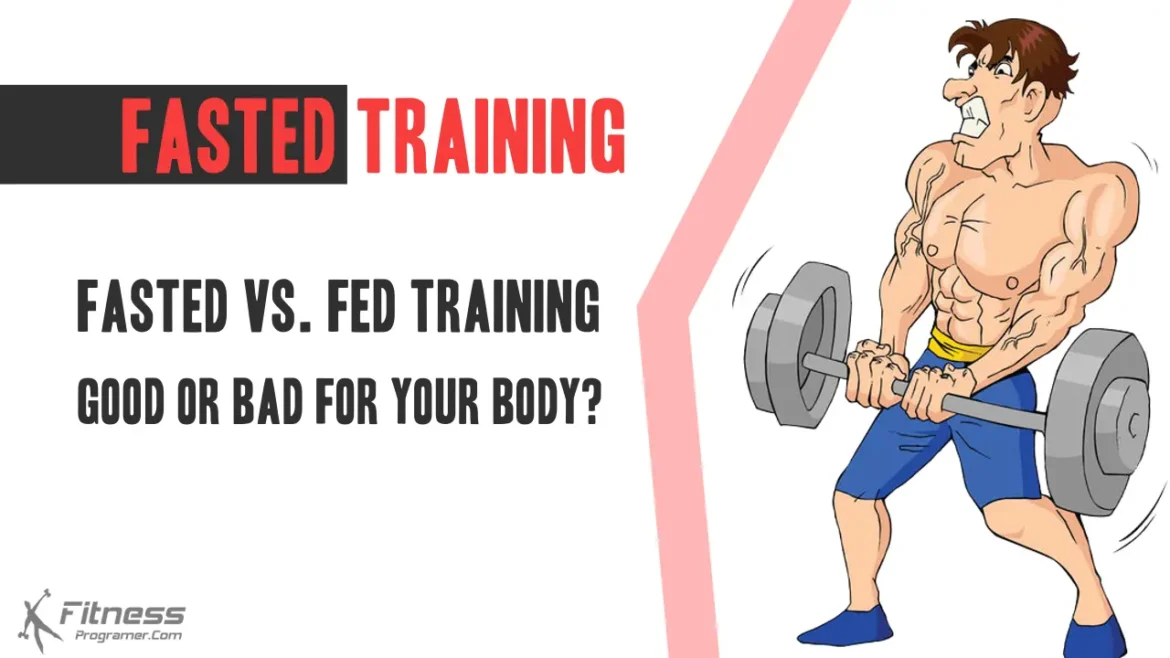The practice of exercising on an empty stomach, also known as fasted training, has gained popularity in recent years—particularly among those seeking fat loss. Advocates claim it helps burn more fat, while critics warn of decreased performance and muscle loss.
So, what does the science really say?
This article explores the physiological effects of fasted vs. fed training, its pros and cons, and how to determine whether training in a fasted state is beneficial or detrimental—depending on your individual goals, fitness level, and health status.
What Is Fasted Training?
Fasted training typically refers to working out in the morning after an overnight fast, when your body has not consumed calories for 8–12 hours. During this state:
- Insulin levels are low
- Glycogen stores may be reduced
- The body is more likely to use fat as a fuel source
Fasted training can include:
- Cardio (especially low to moderate intensity)
- Resistance training
- High-intensity interval training (HIIT)
Potential Benefits of Training on an Empty Stomach
1. Increased Fat Oxidation
Fasted cardio may enhance fat utilization as a fuel source. A 2016 study published in British Journal of Nutrition found that fat oxidation during exercise was significantly higher in a fasted state compared to a fed state (Schoenfeld et al., 2014).
However, this does not necessarily translate to greater fat loss over time—total energy balance remains the most important factor.
2. Improved Insulin Sensitivity
Some studies suggest that fasted training may improve insulin sensitivity and glucose regulation, particularly in individuals with insulin resistance or metabolic syndrome (van Proeyen et al., 2010).
3. Convenience and Habit Formation
Training before breakfast can be easier for people with busy schedules and may support habit formation by removing the need to plan or digest a meal beforehand.
Potential Drawbacks of Fasted Training
1. Reduced Exercise Performance
For many individuals, glycogen depletion in a fasted state can lead to:
- Reduced endurance
- Decreased power output
- Lower training intensity
This is especially relevant for high-intensity or long-duration sessions.
2. Increased Muscle Protein Breakdown
Without amino acid availability from food, fasted training—particularly resistance training—can increase muscle protein catabolism (Tipton et al., 2001). Over time, this may hinder muscle retention or growth.
To mitigate this, some experts recommend consuming 10–15g of essential amino acids or a small protein shake before fasted resistance workouts.
3. Greater Perceived Exertion
Fasted workouts may feel harder subjectively, which can affect consistency, especially in beginners.
Fasted vs. Fed Training for Fat Loss: What the Research Says
Long-Term Fat Loss
Despite higher fat oxidation during fasted sessions, total fat loss over time does not differ significantly between fasted and fed states when calories are matched.
Key Study:
Schoenfeld BJ et al. (2014) conducted a randomized trial comparing fasted and fed aerobic training. After 4 weeks, both groups lost similar amounts of fat.
Conclusion: Fasted training may affect fuel use during exercise, but not total body fat loss, unless coupled with a caloric deficit.
Who Might Benefit from Fasted Training?
- Endurance athletes on low-intensity runs for metabolic adaptation
- Individuals targeting fat loss who feel comfortable without food
- Intermittent fasters maintaining consistency with morning workouts
- Advanced trainees experimenting with fuel partitioning
Who Should Avoid Fasted Training?
- Beginners or underweight individuals
- Those focused on muscle hypertrophy or strength gains
- People with low blood sugar sensitivity or prone to dizziness/fainting
- High-intensity sport athletes needing peak output
Tips for Safe and Effective Fasted Training
- Hydrate first (water, black coffee, or electrolytes)
- Use fasted training for low to moderate-intensity cardio
- For strength workouts, consider EAAs or BCAAs before training
- Monitor for signs of dizziness, fatigue, or performance decline
- Eat a balanced recovery meal post-workout (including protein + carbs)
Conclusion
Training on an empty stomach has both advantages and limitations. While it can enhance fat oxidation and metabolic flexibility in some individuals, it may also compromise performance or muscle preservation, particularly during intense or resistance-based training.
Ultimately, the effectiveness of fasted training depends on your:
- Goals (fat loss vs. muscle gain)
- Personal comfort
- Training style
- Overall energy and macronutrient intake
There is no one-size-fits-all answer. The best approach is the one that supports your consistency, health, and performance—whether fasted or fed.
References
- Schoenfeld BJ, et al. Body composition changes associated with fasted vs non-fasted aerobic exercise. J Int Soc Sports Nutr. 2014;11:54.
- van Proeyen K, et al. Training in the fasted state improves glucose tolerance during fat-rich diet. J Physiol. 2010;588(Pt 21):4289–4302. https://doi.org/10.1113/jphysiol.2010.196493
- Tipton KD, et al. Timing of amino acid-carbohydrate ingestion alters anabolic response of muscle to resistance exercise. Am J Physiol Endocrinol Metab. 2001;281(2):E197–E206. https://doi.org/10.1152/ajpendo.2001.281.2.E197
- American College of Sports Medicine. ACSM’s Guidelines for Exercise Testing and Prescription, 11th ed.
